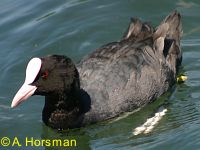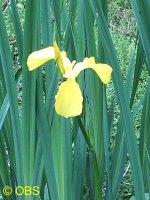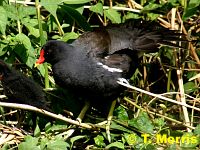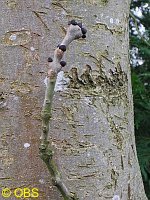Little Meadow and Flashetts
A 1 mile (1.6 km) walk highlighting nature and wildlife by the River Test
This is an extract from the leaflet. The printable leaflet is available to download from our online library.
This section of the River Test is a Site of Special Scientific Interest because it is a classic chalk stream and one of the most species-rich lowland rivers in England. The source of the river is two miles upstream. The riverbed has a shallow flat gravel bottom and the great clarity of the water made Flashetts an ideal watercress bed in former times.
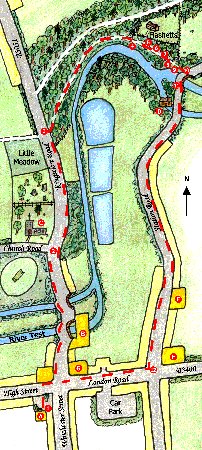
1. From Overton Community Centre (A) head north down Kingsclere Road passing Town Mill (B) on your right. As the bridge passes over the River Test there is a chance to see trout, swans, ducks and coots. Continue along the pavement. The ivy flowers and berries in the hedge are an important source of food for birds and insects in the autumn and winter. The next bridge offers views to the left across Overton Recreation Centre, a former water meadow.
2. Before Church Road, cross Kingsclere Road onto the opposite pavement. Continue past St Mary's Church (C) on your left. Beyond the graveyard is "Little Meadow" which the Overton Biodiversity Society is developing into a Community Garden; cross over and have a look around.
3. Continue along Kingsclere Road and turn right along the gravel path at a footpath sign. This watery area called Flashetts supports willow, watercress, yellow flag, reeds and sedges.
4. Opposite Flashetts House is a picturesque vista onto the open water with overhanging trees and a resident wildlife population. Look out for ducks, moorhens, coots and other water birds.
5. Continue into the woody part of the trail with broadleaved semi-natural woodland and scattered areas of scrub and swamp. These differing habitats support a great diversity of plants and animals. Dead wood is a wildlife haven and can provide shelter for insects and small animals.
6. At the small bridge, pause to note the clarity of the River Test. The shallow chalk stream and its flat gravel bottom is a Site of Special Scientific Interest (SSSI).
7. As you pass through the avenue of trees, ahead and to the left, you can see the site of a Norman Chapel at Quidampton Farm.
8. Further along, the river divides into two channels but before you reach the footbridge it is worth having a look to the right for views of a small waterfall and the mature ash trees at Quidhampton Mill.
9. The shallow area of open water is a favourite local beauty spot. If you look closely at the water's edge you may be able to spot very small fresh-water shrimps hiding under leaves.
10. Continue through the gate where, from the bench under the tree, you can admire the beauty and tranquillity of Flashetts and the juvenile River Test.
11. Turn right along Station Road and cross over. Take care where there is no pavement. You will notice an old building on the right which is Quidhampton Mill (D). Continue along the pavement and cross the road by the Old House At Home.
12. Pass Overton Memorial Institute (F), and then turn right into London Road. Cross London Road near the White Hart (G) and return to the Community Centre.
Download the full leaflet from our online library, return to the Nature trails page or return to the top of this page.



